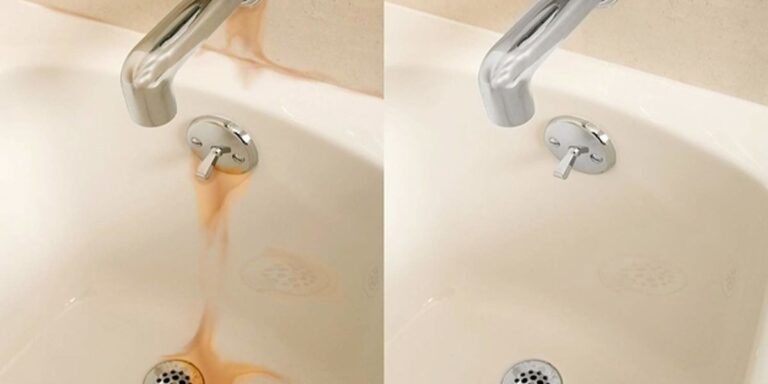Do You Need a Permit to Replace a Bathtub?
Replacing a bathtub can seem like a straightforward home improvement project, but before starting demolition, it’s important to consider if you need a permit. In many cases, the answer is yes; installing a new bathtub requires legal permission from your local building department. However, certain minor tub replacements may not require a permit.
Knowing when a bathtub replacement permit is required can save you time, money, and serious headaches down the road. Read on to learn more about permit requirements, safety issues, and how to navigate the permitting process for your bathtub installation project.
When Do You Need a Permit to Replace a Bathtub?
In general, if you’re doing a full bathtub replacement that changes the original size, shape, or location, you will need a permit. More extensive refinishing jobs also typically require permits. However, minor cosmetic swaps may not. Here are some key examples:
Permits Are Usually Required for Major Bathtub Replacements
- Replacing a standard 5-foot rectangular tub with a larger or differently shaped model
- Moving the location of the tub within the bathroom or to another room
- Taking out a tub and installing a walk-in shower
- Gut renovations that involve replacing multiple bathroom fixtures, including the tub
These types of major changes involve considerable demolition and construction, so permits are mandatory. The work impacts plumbing, electrical systems, and structural elements, so inspections will be required.
Permits May Not Be Needed for Minor Bathtub Replacements
- Swapping out one standard sized alcove tub for a new one of the same shape and dimensions
- Simply replacing the bathtub faucets or showerheads
- Re-glazing a worn tub surface with new coating
- Attaching a tub surround or re-tiling existing tub walls
For small cosmetic updates like these, permits are often not required. However, it’s still smart to check with your local building department before assuming you’re in the clear.
Check Your Local Building Codes and Regulations
Permit requirements for tub replacements can vary depending on where you live. Some counties, cities, or states may not require permits for minor tub refinishing jobs. Others might require them across the board.
To find out the specific rules in your area, contact your local building department. Describe the details of your planned bathtub replacement and find out if you need a permit. Don’t rely on what you’ve heard from friends or neighbors – building codes can differ even across neighborhoods.
Bathtub Replacement Permit Requirements by Location
| Location | Permit Required? |
|---|---|
| New York City | Yes for all tub replacements |
| Los Angeles County | Only for major refits, not minor swaps |
| Houston, TX | No permit needed if same size and location |
| Miami-Dade County, FL | Yes, permits always required |
As you can see, permit rules for tub installations vary widely based on where you live. Don’t guess – look up the specific requirements for your area.
Why Do Bathtub Replacements Require Permits?
You may be wondering why a straightforward job like swapping out a bathtub requires legal permission. While bothersome, permits serve important public safety purposes. Key reasons your local building department may require bathtub replacement permits include:
Safety and Proper Installation
Permits allow building inspectors to check that the new tub meets plumbing codes and safety standards. This includes:
- Using approved slip-resistant surfaces
- Ensuring proper drainage and waterproofing
- Checking for adequate structural support
- Avoiding hazards like exposed electrical
Adhering to codes means your new tub will be safe, accessible, and built to last. Permits also allow for checking for problems during the installation process.
Prevent Perpetuating Existing Safety Hazards
Older, existing tubs may not meet current safety codes. Legally requiring permits prevents grandfathering in unsafe or inaccessible conditions.
With proper permits, your new tub must be up to today’s standards. This improves safety for all household members.
Avoid Unqualified Contractors
Permits help ensure that only properly licensed and insured contractors perform the work. This prevents unqualified handymen or inexperienced DIYers from doing shoddy installations that could cause major issues down the road.
Proper permits mean your project will meet high quality standards – providing peace of mind and saving you from expensive repairs later.
In summary, permits allow thorough oversight of replacement bathtub installations. This protects homeowners by ensuring your new tub meets critical health, safety, accessibility, and functionality requirements.
How to Get a Permit for a Bathtub Replacement
Now that you know permits are often required, how do you actually get one? Here are the key steps:
Contact Your Local Building Department
Begin by calling or visiting your city, town, or county building department’s permit office. Ask exactly what permits you’ll need to replace a tub.
Provide details like the scope of work, who will do the installation, and the existing bathroom layout. They’ll outline requirements like:
- Permit application forms to complete
- Needed licenses and insurance paperwork
- Fees for the permit(s)
- Number of inspections required
Learn what information you must provide and what the total permitting process entails before construction begins.
Hire a Licensed Plumber or Contractor
In most cases, you’ll need to hire a licensed professional plumber or contractor to replace a tub and pull the proper permits. Doing major bathroom remodeling work yourself as a DIY homeowner may not be allowed.
Experienced tub installers are familiar with legal permitting requirements. They’ll know how to correctly complete the application and handle inspections. Trying to get a DIY permit risks rejection and project delays.
Schedule Inspections
Part of the permitting process usually involves scheduling building inspections. This typically includes:
- Pre-replacement inspection – Checking current conditions
- Rough-in inspection – Reviewing work after demolition but before finishing
- Final inspection – Verifying completed installation meets code
Passing these inspections is required before your new tub can be approved for use. Scheduling inspection appointments in advance keeps the project on schedule.
In summary, work with your local building department and a qualified tub installer to make sure you obtain all needed permits. This keeps your replacement project code-compliant and avoids potential safety issues in your home’s essential bathroom space.
Conclusion
Replacing a worn-out bathtub can give your bathroom a fresh new look and feel. But before starting demolition, take time to understand if you need a permit.
In many areas, full bathtub replacements require permits, especially if you alter the tub’s size, location, or surround. However, minor cosmetic refinishing jobs may not need one. Check your local regulations to determine specific requirements.
While permits create extra steps, they serve vital safety purposes. They ensure your new tub meets strict building codes and is installed properly by qualified pros. Taking the time to get the needed permits protects you, your family, and your most-used bathroom space.
With some advance planning and help from experienced contractors, getting a bathtub replacement permit does not have to be a headache. Take the right steps, and your project can proceed smoothly, resulting in a beautiful new tub that provides comfort and accessibility for years to come.
FAQs
Do I need a permit to replace my bathtub with a walk-in shower?
Yes, converting a bathtub into a walk-in shower requires extensive plumbing work and remodeling, so permits are usually mandatory. Check with your local building department.
What if I’m just replacing my old tub with a new tub of the same size?
You may not need a permit for a basic tub-for-tub replacement if the new one is identical. But confirm with your city or county to be sure.
Can I do a bathtub replacement myself without permits?
In most cases no, permits require licensed professionals. DIY work risks rejection, and you may still need inspections. Hire an experienced contractor.
What renovations require a permit in NJ?
In New Jersey, most major home renovations require permits, including structural changes, electrical/plumbing work, HVAC changes, and additions. Minor cosmetic updates like painting usually don’t need permits. Check your town’s specific rules before starting any project.
Do you need a permit to replace a bathtub in California?
For replacing a bathtub in California, permits are required in most cases. Full tub refits need approval to ensure proper drainage, waterproofing, slip-resistance, etc. But you may not need a permit just to re-glaze or re-tile around an existing tub; check with your local building department.
Do I need a permit to remodel my bathroom in Illinois?
If you’re remodeling your bathroom in Illinois, expect to need permits. Anything beyond surface-level cosmetics, like installing new fixtures, moving walls, or replacing the tub or shower, generally requires a permit in Illinois. This helps ensure renovations meet plumbing, electric, and building codes.
What can a homeowner do without a permit in Florida?
In Florida, some minor DIY projects may not need permits – like painting, flooring, cabinet swaps, and basic landscaping. But anything structural, electrical, or plumbing-related does require permits for safety reasons. When in doubt, contact your local building office before starting work as a homeowner.
Related guides:
- Is It Hard To Replace A Bathtub?
- How Much Does It Cost to Remove a Tub and Replace a Shower?
- Can I Replace My Own Bathtub?
- How Long Does It Take to Remove and Replace a Bathtub?

William J. Bullock is a licensed plumber with over 15 years of experience installing and repairing bathtubs. He runs his own plumbing company in Greenville and serves residential and commercial clients. William is dedicated to providing honest, transparent advice to help homeowners make informed decisions about their bathroom renovations.
He has established expertise in selecting bathtubs, planning custom installations, diagnosing issues, and completing repairs. William aims to share practical tips and reliable recommendations based on extensive hands-on work. When he isn’t on a job site, William enjoys spending time with his family and volunteering at local community events. He takes pride in delivering quality service and enjoys helping people upgrade their homes.







